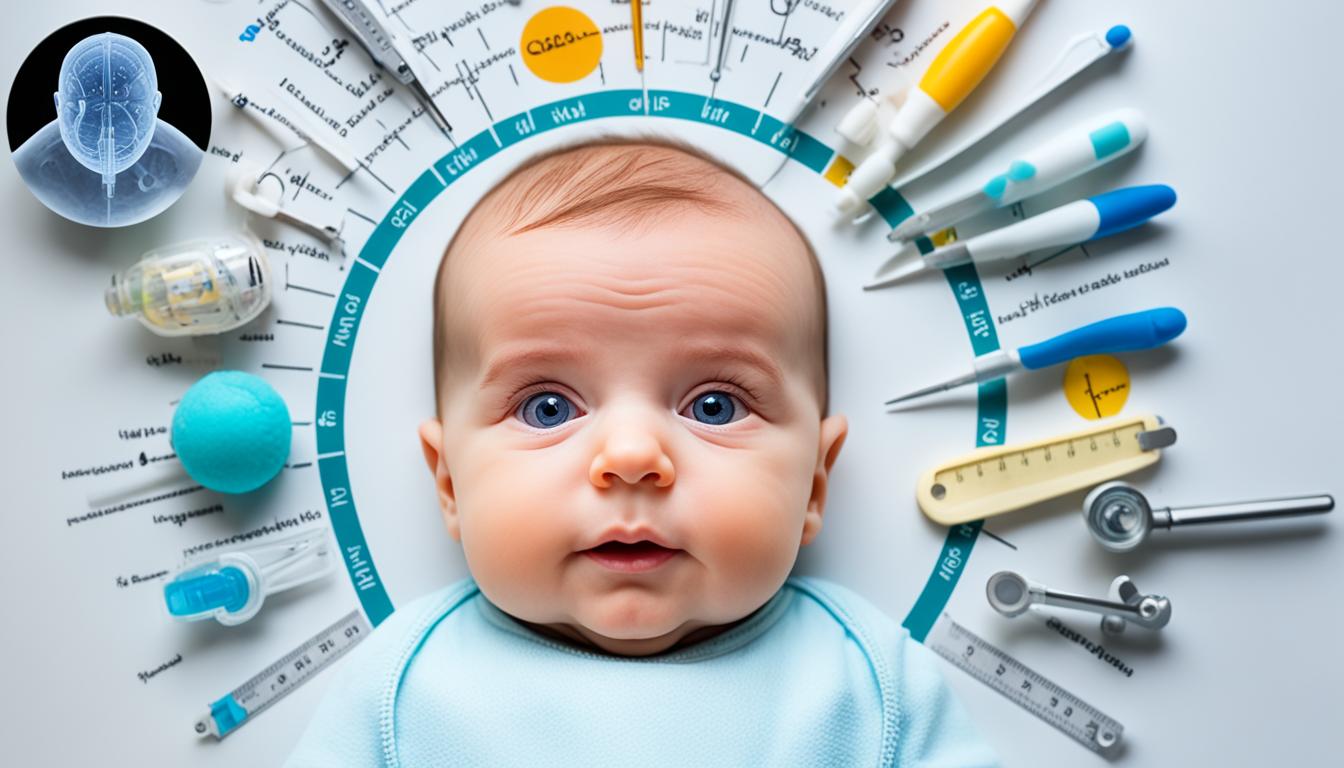Congenital plagiocephaly is a condition present in infants. It causes their head shape to become asymmetrical or deformed. This issue can happen for several reasons. These include sleeping on their back, being born early, or not having enough space in the womb.
Since 1992, more babies have shown signs of this condition. This increase is linked with advice to place babies on their backs. This was to lower the risk of Sudden Infant Death Syndrome (SIDS). The main type of plagiocephaly is known as positional plagiocephaly. It can be recognized by an uneven or flat area on the baby’s head.
Key Takeaways:
- Congenital plagiocephaly causes an irregular or deformed head shape in babies.
- It often happens if a baby sleeps on their back, is born early, or had little room in the womb.
- The most common form is positional plagiocephaly, which is non-synostotic.
- Placing babies on their backs to prevent SIDS may have led to more cases since 1992.
- It’s easy to spot positional plagiocephaly by looking for a flat or misshapen area on the head.
Diagnosis and Treatment of Congenital Plagiocephaly
Diagnosing congenital plagiocephaly includes examining the baby’s head shape and health history. Doctors check head size and feel the skull to understand the issue’s seriousness. Spotting this early helps in its treatment.
Treating congenital plagiocephaly depends on the baby’s age and how bad the condition is. The focus is on fixing the flat or misshapen head to support healthy growth.
Repositioning Techniques
Changing a baby’s sleep position can ease pressure on flat spots. Encouraging side sleeping or varying sides helps. Using support items ensures their head stays in a good position.
Spending time on the stomach during play builds neck muscles and helps move the head naturally. Increasing this tummy time as they grow can make it more effective.
Physical Therapy Exercises
Physical therapy, like exercises to stretch and strengthen the neck, can enhance the baby’s control over their head. These are advised by doctors and therapists and must be safe and suited to the child’s age.
Cranial Helmets
When repositioning and therapy aren’t enough, cranial helmets might be used in severe cases. Fitted by specialists, these helmets gently shape the baby’s head for a few months. Regular check-ups are needed to track progress.
Flat Head Syndrome Treatment
A mix of repositioning, therapy, and helmet use is often the best strategy for flat head syndrome. Together, these methods correct the shape and encourage proper head growth.
Talking to healthcare providers helps parents find the right treatment for their baby’s plagiocephaly. A plan tailored to each case gives the best outcomes.
| Treatment Options | Advantages | Disadvantages |
|---|---|---|
| Repositioning Techniques | – Non-invasive – Can be done at home |
– Requires consistent effort – May take time to see results |
| Physical Therapy Exercises | – Enhances neck muscle strength – Improves range of motion |
– Requires professional guidance – Time commitment |
| Cranial Helmets | – Customized for individual needs – Can correct severe deformities |
– Expensive – Requires regular adjustments |
Stem Cell Therapy for Congenital Plagiocephaly
Recent studies have looked into using stem cell therapy for congenital plagiocephaly. This offers new hope to babies with the condition. They have found that certain stem cells might help grow the missing parts of the skull.
Tests on animals have shown that stem cells can improve the shape of the head. However, more studies are needed to see if this works the same in people. Scientists need to do many more trials to make sure this is a safe and useful treatment for infant plagiocephaly.
Even though there is much to learn, stem cell therapy is promising for treating plagiocephaly. These new methods could change how we care for babies with head shape issues. Such treatments might offer solutions that are both better and more precise.

